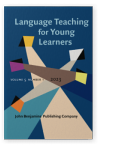Vol. 5:1 (2023) ► pp.85–109
Extramural English for early language learning
A blessing or a curse?
Due to the online global presence of English, many EFL learners encounter English outside the classroom from an early age. This study examined teachers’ perceptions of the language learning affordances, challenges, and benefits in the early English classroom (ages 7–11) of English learnt outside school (extramural English (EE), Sundqvist & Sylvén, 2016). A mixed-methods approach, including a survey, interviews, and data from Facebook interest groups on teaching English, was used to gauge teacher perceptions. Results showed that generally teachers had positive attitudes towards the learning potentials of EE (especially related to fostering vocabulary learning) and for creating motivation for learning English. Teachers found less benefits of playing digital games than from watching YouTube videos. Teachers also reported demotivation in students stemming from being bored in class or from feeling behind compared to others, i.e., personal expectations of English skills were high. The study points to a need for focus in teacher education on the benefits of extramural activities for their students’ learning (especially gaming). This means fostering awareness in prospective teachers of the importance of incidental learning processes as these are key in the global English context. Moreover, sharing ideas for integrating EE into teaching practices is needed.
Article outline
- 1.Introduction
- 2.Background
- 2.1English in Denmark
- 2.2Extramural English engagement and learning
- 2.3Teachers’ perceptions of extramural English
- 2.4The early English-language classroom
- 3.The present study
- 3.1Theoretical grounding
- 3.2Participants and recruitment
- Ethics
- 3.3Methods
- 3.4Materials
- 3.5Data analysis
- 4.Results
- 4.1Teachers’ perceptions of the learning potentials of extramural English engagement (RQ 1)
- 4.2The perceived challenges and benefits in the early English-language classroom of pupils’ engagement with Extramural English (RQ 2)
- 4.2.1Diverse student populations (theme 1)
- 4.2.2Motivation and engagement (theme 2)
- 4.2.3Classroom anxiety (theme 3)
- 5.Discussion
- 6.Conclusion
- 6.1Implications of study
- 6.2Limitations
-
References
